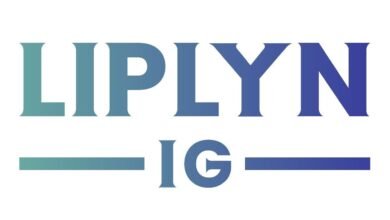GEO Platform Shutdown Ignites AI Search Industry Debate

▼ Summary
– Benjamin Houy shut down Lorelight, his GEO platform, after concluding most brands don’t need specialized tools for AI search visibility.
– He determined that brands mentioned most in AI answers share common traits like quality content, authoritative mentions, strong reputation, and genuine expertise.
– Houy argues GEO tracking should be integrated into broader SEO suites rather than existing as standalone products, as AI models use the same content that builds brands elsewhere.
– Industry reactions are split, with some marketers seeing AI search as a meaningful new channel while others view it as driven by the same fundamental brand signals.
– SEO platforms are likely to incorporate AI visibility into existing analytics rather than creating separate GEO tools, with businesses advised to focus on proven brand-building fundamentals.
The recent shutdown of the GEO platform Lorelight has ignited a significant debate within the AI search industry about the necessity of specialized tools for tracking brand visibility in AI assistants. Founder Benjamin Houy decided to close the platform after determining that most brands do not require a dedicated solution for monitoring their presence in systems like ChatGPT, Claude, and Perplexity. His analysis revealed that brands consistently mentioned in AI-generated answers share common characteristics: they produce high-quality content, receive mentions in authoritative publications, maintain strong reputations, and demonstrate genuine expertise.
Houy emphasized that there is no distinct “GEO strategy” or “AI optimization” separate from traditional brand-building efforts. He noted that AI models are trained on the same content that strengthens a brand across all other channels. In a detailed blog post, he explained that while customers appreciated Lorelight’s insights, many eventually canceled their subscriptions because the data did not lead to changes in their marketing tactics. Users continued to focus on the same core principles regardless of whether they had access to GEO dashboards.
He argued that GEO tracking functions more effectively as one component within comprehensive SEO suites rather than as an independent product. Several established SEO platforms have already started integrating AI visibility signals into their existing toolkits, avoiding the creation of a separate product category.
Reactions from marketing professionals highlight a clear division in how the industry perceives AI search. Some SEO experts praised the back-to-basics approach, while others pointed to instances where referrals from AI assistants have proven valuable.
Lily Ray expressed gratitude for the honest assessment, stating that the industry needs to hear this message clearly. Randall Choh offered a different perspective, suggesting that LLM searches often involve stronger user intent and can lead to higher conversion rates. Karl McCarthy supported the idea that quality content, authoritative mentions, and reputation are what truly drive results, describing it as a network effect rather than a tool-based solution. Nikki Pilkington raised concerns about consumer fairness, questioning whether promotional content for GEO should be revised or removed following the platform’s closure.
These differing views reflect ongoing tension in the field. Some marketers view AI search as an emerging performance channel worthy of specific measurement, while others believe the same brand signals that drive success in SEO and public relations also determine outcomes in AI assistants.
Measuring visibility in AI search presents unique challenges because assistants operate differently from conventional web search engines. They typically surface brands through two primary methods: directly citing and linking to sources in their answers, or guiding users toward standard web search results. Tracking referrals can involve monitoring direct links, analyzing copy-and-paste behavior, or observing increases in branded search queries.
Attribution remains complicated because not all AI assistants provide clear referral data. Marketing teams often combine UTM parameters on shared links with metrics such as branded search volume increases, direct traffic spikes, and assisted conversion reports to estimate the influence of large language models. This fragmented approach means that while individual case studies can be compelling, they are difficult to generalize across different situations.
The central question remains whether AI search requires its own optimization framework or simply benefits from established brand signals. If Houy’s assessment is accurate, standalone GEO tools may primarily offer engaging dashboards without substantially influencing strategy. Conversely, if advocates are correct, ignoring assistant visibility could mean missing profitable opportunities that exist between traditional search and traffic referred by LLMs.
Looking ahead, SEO platforms will likely continue incorporating AI visibility metrics into their existing analytics rather than developing separate categories. For businesses, the most prudent approach involves continuing the brand-building work that AI assistants already recognize and reward, while experimenting with assistant-specific measurements in areas where they show the most potential for meaningful returns.
(Source: Search Engine Journal)





